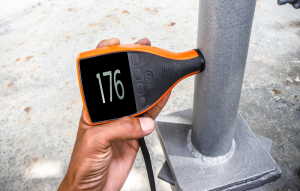Mold growth is a common concern for Milwaukee residents, given the city's climate and humidity levels. However, mold testing doesn't have to be complicated or overwhelming. In this guide, we'll outline essential steps to make mold testing easy and accessible for Milwaukee residents, helping you protect your home and your family's health.
Recognize the Signs of Mold
The first step in mold testing is recognizing the signs of mold growth in your home. Keep an eye out for visible mold growth on walls, ceilings, or floors, as well as musty odors and water stains. Additionally, be mindful of any respiratory symptoms or allergic reactions experienced by household members, as these could indicate mold-related issues.
Determine the Need for Testing
Once you suspect mold growth in your home, consider whether mold testing Milwaukee is necessary. Testing may be warranted if you have visible mold growth, experienced water damage, or noticed a persistent musty odor. Additionally, if household members are experiencing unexplained health issues, mold testing can help identify potential mold-related allergens.
Choose the Right Testing Method
Selecting the appropriate testing method is crucial for accurate results. Consider whether air sampling or surface sampling is more suitable for your situation. Air sampling measures mold spore levels in the indoor air, while surface sampling identifies mold growth on surfaces. Consulting with a certified mold inspector can help you determine the best approach for your home.
DIY vs. Professional Testing
Decide whether you'll conduct mold testing yourself using DIY kits or enlist the services of a professional mold inspector. While DIY kits are available, professional testing offers several advantages, including expertise, specialized equipment, and accurate results. Professional inspectors can also provide guidance on remediation strategies if mold is detected.
Interpret Test Results
Once mold testing is complete, it's essential to interpret the results accurately. Review the findings carefully, including mold species, spore counts, and any recommendations for remediation. If mold is present, consider consulting with a remediation specialist to develop a plan for addressing the issue effectively.
Take Action
If mold is detected in your home, take prompt action to address the problem. Implement recommended remediation measures to remove mold growth and prevent future recurrence. This may involve cleaning and disinfecting affected areas, repairing any water leaks or moisture issues, and improving ventilation to reduce humidity levels.
Conclusion
Mold testing doesn't have to be daunting for Milwaukee residents. By following these essential steps, you can make mold testing easy and accessible, ensuring a safe and healthy indoor environment for you and your family. Remember to stay vigilant for signs of mold, consider the need for testing, choose the right method, interpret results accurately, and take prompt action if mold is detected. With proactive measures, you can effectively manage mold-related concerns and enjoy peace of mind in your home.





